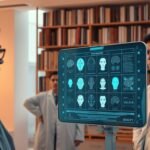
Identifying Risk Factors: What Contributes to Learning Disabilities in Children? The Ultimate Guide
Introduction
In today’s educational landscape, understanding the nuances of learning disabilities is more vital than ever. As educators, parents, and healthcare professionals strive to ensure every child reaches their full potential, one crucial question arises: Identifying risk factors: What contributes to learning disabilities in children?
The importance of this inquiry can’t be overstated. Learning disabilities affect approximately 1 in 5 children, impacting their academic performance, self-esteem, and social skills. Identifying the risk factors for these disabilities not only aids in early detection but also empowers parents and educators with knowledge to provide tailored interventions. This comprehensive exploration will delve into the various risk factors—biological, environmental, and societal—that contribute to learning disabilities, backed by real-world case studies, charts, and actionable insights.
What Are Learning Disabilities?
Before we dive into identifying risk factors, it’s essential to understand what learning disabilities are. Learning disabilities are neurological disorders that affect the brain’s ability to receive, process, and respond to information. These can manifest in various areas, including reading (dyslexia), writing (dysgraphia), and math (dyscalculia).
Case Study: The Journey of Jane
Consider Jane, a bright ten-year-old who loves storytelling but struggles with reading. Her parents initially chalked it up to being a slow learner; however, after identifying her risk factors, they discovered that she had been experiencing symptoms of dyslexia. With the right interventions, Jane blossomed in her reading skills, showcasing the importance of early identification.
Biological Risk Factors
Genetics
One of the most significant biological contributors to learning disabilities is genetics. Studies show that children with a family history of learning disabilities are at a higher risk of developing similar issues.
Brain Development
Additionally, brain development is another key factor. Research indicates that certain areas of the brain associated with language and learning may function differently in children with learning disabilities.
| Biological Risk Factors | Impact on Learning |
|---|---|
| Genetics | Increased likelihood of learning disabilities |
| Brain development | Affects processing speed and comprehension |
Case Study: The Smith Family
The Smith family illustrates the genetic component beautifully. Both parents had learning disabilities, which raised concerns when their child, Liam, started showing similar signs. Identifying those risk factors early allowed Liam’s family to seek appropriate help, ultimately enabling him to thrive academically and socially.
Environmental Risk Factors
Socioeconomic Status
Socioeconomic status plays a crucial role in identifying risk factors. Children from low-income families often lack access to educational resources, which can exacerbate learning difficulties.
Prenatal Factors
Prenatal exposure to harmful substances (such as alcohol or drugs) can also negatively impact a child’s cognitive development. Malnutrition during pregnancy or premature birth can lead to developmental delays.
| Environmental Risk Factors | Impact on Learning |
|---|---|
| Socioeconomic status | Limited access to resources |
| Prenatal exposure | Affects cognitive abilities |
Case Study: Maria’s Early Years
Maria’s story highlights the implications of environmental challenges. Born into a low-income family, she faced several adversities, including inadequate educational resources. Through targeted interventions and support systems, Maria made significant progress, underscoring the importance of addressing environmental risk factors.
Social Risk Factors
Family Dynamics
Family dynamics can heavily influence a child’s learning experience. Children from unstable home environments may struggle with emotional and behavioral issues, impacting their academic performance.
Peer Relationships
Social challenges, such as bullying or social isolation, can further hinder learning and self-esteem. Children need a supportive environment where they feel valued and accepted.
| Social Risk Factors | Impact on Learning |
|---|---|
| Family dynamics | Emotional and behavioral issues affecting learning |
| Peer relationships | Influence on self-esteem and academic performance |
Case Study: Tommy’s Social Struggles
Tommy, a quiet child who often found himself excluded from peer groups, exemplifies social risk factors. His learning difficulties were compounded by his lack of social support. With intervention focused on improving his social skills, Tommy gradually became more engaged in his learning environment.
Identifying Learning Disabilities: Strategies and Interventions
Understanding the various risk factors is a crucial first step. Here are some strategies to identify and intervene effectively:
Early Screening and Assessment
Early screening in preschool and kindergarten can help identify children at risk for learning disabilities. A thorough assessment by professionals can ensure timely intervention.
Involvement of Professionals
Engaging specialists such as psychologists, speech therapists, or special education teachers can help in tailoring educational plans suited to a child’s specific needs.
Parental Support
Parents play a key role in identifying and supporting children with learning disabilities. Encouraging reading at home, maintaining open communication with teachers, and monitoring progress can greatly influence outcomes.
Conclusion
As we conclude this extensive exploration into Identifying risk factors: What contributes to learning disabilities in children?, it’s essential to recognize that every child’s path is unique. The interplay of biological, environmental, and social risk factors can significantly shape a child’s learning journey.
Armed with knowledge of these factors, parents, educators, and communities can work together to create an empowering environment for all children. Early detection, targeted interventions, and supportive networks can make a profound difference.
Key Takeaway:
Never underestimate the power of understanding and compassion in helping a child overcome learning disabilities. By identifying risk factors, we can provide the tools that empower these children to thrive.
FAQs
1. What are the most common learning disabilities in children?
Common learning disabilities include dyslexia (reading), dysgraphia (writing), and dyscalculia (mathematics).
2. How can I tell if my child has a learning disability?
Signs may include difficulty in reading, writing, or mathematic skills, consistent low performance in school, and challenges in processing information.
3. Are learning disabilities hereditary?
Yes, genetics can play a significant role in the likelihood of developing a learning disability. Family history should be considered when assessing risk.
4. What interventions can help a child with learning disabilities?
Interventions may include specialized educational plans, one-on-one tutoring, speech therapy, and parental support through consistent encouragement.
5. How can parents support a child with learning disabilities?
Parents can create structured routines, communicate openly about challenges, engage in reading and educational games, and foster a positive, supportive environment.
6. Can learning disabilities be overcome?
While learning disabilities are lifelong, many children can learn strategies and adapt to achieve success in their academic and personal lives with the right support and interventions.
This profound journey into Identifying risk factors: What contributes to learning disabilities in children? empowers us as a society to pave the way for a brighter future. Let us commit to understanding, supporting, and uplifting each child, ensuring no one is left behind on their path to success.
















